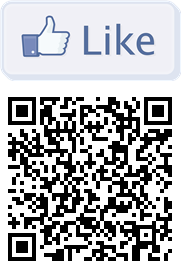In my introduction I suggested that use of social media within the firewall would expand hugely.
There is no doubt that 2010 has been a year of huge change for intranets. Most intranets have now adopted social features with McKinsey's 2010 annual Web 2.0 survey finding that two-thirds of companies surveyed used Web 2.0 technologies. The number of companies using social networks increased by 40% and there was a 38% increase in blog use. The intranet is becoming the place where employees work, collaborate and communicate. The changes have led to debate about the term intranet - NetJMC opting for 'workplace web' and the Intranet Benchmarking Forum (IBF) using 'digital workplace'.
There has been an increase in growth in sales and use of enterprise social media software this year. For 2010, Gartner states that revenue is on pace to hit $664 million, a 14.9 percent increase from last year.
"The social software market is evolving in response to the demand for flexible environments in which participants can connect, create, share and find people and information relevant to their work," Tom Eid, research vice president at Gartner.
Following September 2010's Web 2.0 Survey from Prescient, Michael Marchionda stated, 'The results confirm Prescient’s previous assumption that we are in the early stage of the intranet’s next evolvement, one that many in the industry are referring to as the social intranet. Social intranets are those that have the widespread adoption of multiple social media tools for most or all employees to use as collaboration vehicles for sharing knowledge with other employees. With 87% of organization intranets (regardless of size) having at least one intranet 2.0 tool, and less than 10% of organizations having no interest nor plans for implementing at least one intranet 2.0 tool, the findings confirm that we are indeed entering the age of the social intranet'.
Access via mobile device has increased over 2010 with employees using both smartphones and Apple's iPad which was launched in May. For example, data published this month by the Kings Fund shows that 46% of health professionals in the UK use a mobile device to access information on the intranet/internet. "Mobile devices will become larger with popularity driven by Apple's new tablet PC" proved bang on the mark with the iPad hugely popular and other manufactures following suit with tablet devices like the Samsung Galaxy tab and the HTC Desire HD.
Companies such as Juniper Networks are now providing iPad apps which enable secure access and use of a company intranet. "Our customers have started to deploy iPads to enable the productivity of their mobile workforce," said Sanjay Beri, vice president and general manager Access and Acceleration Business Unit, Service Layer Technologies Business Group at Juniper Networks.
My prediction of iPhone and Android apps for enterprise tools like Yammer proved spot on.
Perhaps not the norm yet but cloud computing is certainly moving in that direction. A recent survey of companies in the USA and Europe CA Technologies has revealed that 92 percent of the largest enterprises, dubbed "mega enterprises," have at least one cloud computing service deployed, while 86 percent of large enterprises and 91 percent of medium enterprises are also using at least one cloud computing service.
Microsoft launched its beta version of Office 365 in October which brings together the 2010 releases of Exchange and SharePoint, along with the Lync unified communications platform.
Gartner states:, "Cloud computing and SaaS have enabled smaller businesses, which otherwise couldn't afford to set up a proprietary social network, to take advantage of the technology as well".
Employees using their own technology for work purposes is on the rise. This is partly driven by new devices such as the iPad coming onto the market which take time to be adopted by employers. A survey by Freeform Dynamics in September 2010 of companies with more than 1000 PC users stated that 45% saw a particular trend towards employees bringing equipment into the workplace without the knowledge of IT.
According to IDC, the market research firm, the number of mobile workers is set to pass 1 billion worldwide, by 2013. This is being driven by improved networks and cheaper and better smartphones, but also a more liberal attitude by companies to connecting employee-owned hardware to the corporate network or to business applications.
Presence technology (which in simple terms indicates whether someone is offline or online) has been included in the recent release of Microsoft's Lync 2010 which is a single platform that in addition to presence integrates instant messaging, audio, video, webconferencing and voice. It's also included in the employee directory of Intranet Connections although despite it's popularity on external tools like Facebook Chat and Meebo, has not been incorporated on all platforms.
6) 2010 will be the year when you only have to login to your PC or through a web portal to gain full access to all network applications and systems.
Anecdotal evidence suggests that 'single sign-on' has become more commonplace with Active Directory being used to provide access to multiple resources but it's proved difficult to find hard evidence.
Despite they're being a huge increase in video online - in May 2010, 24 hours of video were uploaded every minute and by November 2010 this had increased to 35 hours - there seems a reluctance for companies and organisations to embrace video. As you might expect technology companies are using video. For example, Microsoft has had its own 'internal YouTube', Academy Mobile since 2007.
For a 'bolt-on solution' Large enterprises continued to install Google Search Appliance and Google Mini was popular with small to medium sized companies. However, software vendors are now including intelligent search in the intranet platforms. For example, Interact's Intranet Statistics & Search shows helps Intranet Managers learn how users interact with the intranet and shows which content is effective.
Employee directories are becoming more advanced and morphing into knowledge centres and expert databases. Features such as special skills, current projects and built in communication tools such as instant messaging are becoming the norm in addition to standard features such as photos, phone numbers and job titles. An example of such an employee directory is included in Intranet Connections platform. This also allows employees to generate email distribution lists.
In February it was reported by Manpower that only 29% of companies had a social media policy. I've not been able to find hard data but certain that this figure has increased over the year. Dave Fleet, Vice President, Digital at Edelman reported in July 2010 that an increasing number of companies are asking him to do foundational work on creating a policy.
Please comment below or get in touch and tell me what you think.











0 comments:
Post a Comment